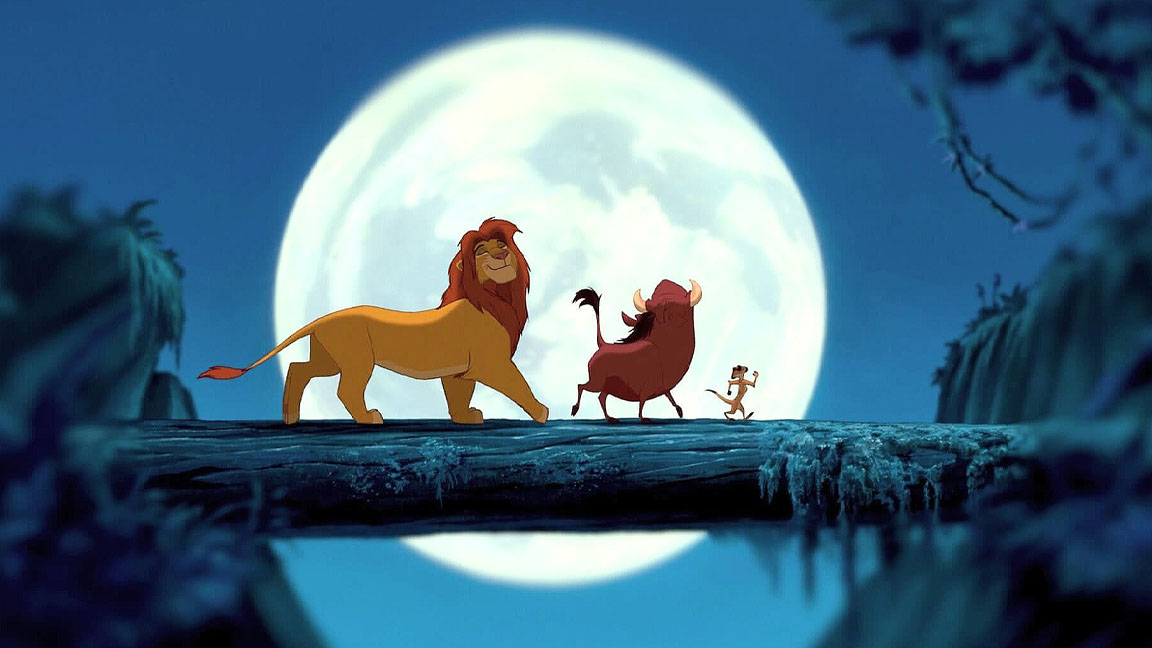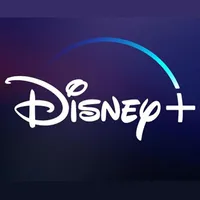The overlooked reasons why '90s animated films still hold up – and why they still feel magical

The best animated films of the 1990s still hold up today, and it's more than nostalgia behind the enduring joy of films like The Lion King, Ghost in the Shell, and Beauty and the Beast. The best cartoon movies of the '90s took a diverse and often experimental approach to animation, mixing old techniques with emerging CG technology to surprise audiences. It's why the 1990s marked a renaissance, at least for American feature animation.
The Disney animated fairy tale genre that had been so essential to establishing the studio’s animation production profile in the 1930s enjoyed a new surge of popularity with Beauty and the Beast, Aladdin, and the mythically inclined The Lion King.
Throughout the decade, anime continued to connect with an increasingly large, appreciative, and fascinated audience. Critically, CG production began to emerge as a creatively and economically feasible means for producing animated creatures.
The flip side of this brave new world was the relatively rapid decline of cel animation in American mainstream feature animation. Fascinatingly, though, stop-motion animation continued to enjoy being showcased in several high-profile American studio projects. Read our best stop-motion film list for more on this animation.
If you love the films below on my list, then read our guides to the best animation software and best free animation software, and start creating yourself.
11. Only Yesterday
Only You was based on the 1982 manga Omoide Poro Poro by Hotaru Okamoto and Yuko Tone,
GKIDS, Toho Co., Ltd., Walt Disney Studios (1991)
Only Yesterday was a crucial film in cementing anime’s reputation as a visually rich and emotionally nuanced medium beyond Japan’s borders. Unlike the fantasy-driven epics that often dominate anime’s international image, this film offered a quietly powerful, introspective story grounded in everyday life. Dr. Chris Holliday of King’s College London notes, “Studio Ghibli's early nineties tale contains all the hallmarks of the studio's tried-and-tested formula.”
Daily design news, reviews, how-tos and more, as picked by the editors.
Directed by Isao Takahata, Only Yesterday blends Ghibli’s trademark emotional depth with a tender exploration of childhood memories, nostalgia, and self-discovery. The film’s hand-drawn animation captures the contrast between Japan’s sprawling urban environments and the serene countryside, emphasizing a yearning for tradition and a closer relationship with nature amid rapid modernization. Its protagonist’s reflective daydreams about the past gently unfold into revelations about the present, illustrating how personal history shapes our sense of connection and belonging.
As Holliday puts it, the film “presents its protagonist’s fantasies of the past [that] help her to learn the personal value of connection in the here and now.” This subtle but profound approach helped Only Yesterday stand out as a contemplative and artistically ambitious work within the Studio Ghibli canon.
10. Beauty and the Beast
Beauty and the Beast was the first time that each animator was credited for the character that they worked on. The film was also the first animated feature to be nominated for Best Picture at the Oscars.
Walt Disney Studios (1991)
Disney’s Beauty and the Beast is more than a beloved fairy tale; it’s a landmark in animation history. Released during the 'Disney Renaissance', it blended Broadway-style musical storytelling with bold visual experimentation, becoming the first animated film nominated for Best Picture at the Academy Awards. Its emotional weight, rich characterisation, and elegant humour helped bridge the gap between children’s entertainment and serious cinema.
Technologically, it broke new ground with its seamless integration of hand-drawn animation and early CGI. The iconic ballroom scene used a 3D-rendered environment and virtual camera movement. This wasn’t Disney’s first use of CG, The Great Mouse Detective from 1986 had experimented, but Beauty and the Beast made it feel essential to the story, and seamless. (Read my list of 1980s animated films.)
Visually, the film reflects its characters' inner lives: Belle’s village is rigid and orderly, while the castle is ornate and chaotic, echoing the Beast’s emotional turmoil. Subtle animation choices, hesitations, glances, and pauses convey psychological realism, inviting empathy in new ways.
Ultimately, Beauty and the Beast redefined what animation could be: emotionally complex, technically innovative, and artistically daring. It set a new standard, not just for Disney but for cinematic storytelling as a whole.
9. The Nightmare Before Christmas
Art historian Ruth Millington comments that, “In 1980 [Burton] began his cinematic career as an apprentice animator for Walt Disney Studios… However, [his] contributions never made it into the finished films, as it was agreed that his Gothic aesthetic didn’t suit Disney’s style and audience.”
Walt Disney Pictures, Touchstone Pictures (1993)
Having made an impact with his two Disney-produced stop motion shorts Frankenweenie and Vincent, Burton initially considered The Nightmare Before Christmas as a possible TV special. Eventually, the movie was realised as a feature that Burton produced with Henry Selick as its director.
For Drew Roper, Animation director and CEO of Birmingham-based Yamination studios, “These wonderful films like Nightmare are embedded within my upbringing. They’re key reasons why I fell in love with animation, and also, stop-frame in particular.
The innovation, ingenuity, and imagination are ground-breaking. You believe in every breath those characters take. Considering the technology used during filming, compared to today’s standards, what’s been created and captured in terms of character performance is breathtaking. These characters are truly iconic.”
Read our article on the eight rules of movie animation, according to Guillermo del Toro, for more on stop-motion animation.
8. The Lion King
The Los Angeles Film Critics’ Association awarded the film Best Animation.
The Walt Disney Company (1994)
The Lion King isn’t just one of Disney’s most beloved films; it’s a masterclass in visual storytelling and emotional resonance. While its sweeping landscapes and painterly skies remain stunning decades later, it’s the film’s use of classical narrative structure, the hero’s journey, that cemented its global appeal. Simba’s arc from exile to redemption echoes mythic storytelling traditions (it's based somewhat on Shakespeare’s Hamlet), yet feels immediate thanks to the film’s subtle character animation and dramatic weight.
What makes The Lion King visually iconic is how it uses traditional cel animation to evoke a vast, living world. From the sun-drenched Pride Lands to the eerie green glow of Scar’s lair, every frame feels considered and cinematic. The animators pushed character acting to new levels, just look at how Mufasa’s quiet authority contrasts with Scar’s slinking sarcasm. These aren’t just animals; they’re emotionally complex characters brought to life through gesture, silhouette, and expertly timed movement.
A breakout commercial hit, The Lion King didn’t just dominate the box office; it became a touchstone in animation history. Its blend of epic scale, stylised beauty, and powerful storytelling helped redefine what hand-drawn animation could achieve, inspiring a generation of artists and animators in its wake.
We can still learn lessons from this movie and its animators, literally, just read Aaron Blaise's character design advice (he was the supervising animator on the movie).
7. Casper
Animator Phil Nibblelink provided real-time animation on the set of Casper that Brad Silberling (director) and his crew referred to. In effect, Nibbelink was drawing live 2D animatics on set.
Universal Pictures, Universal Pictures Home Entertainment (1995)
Animation and live-action hybrids have been a part of cinema since its earliest days: just look back to Winsor McCay’s short film Gertie the Dinosaur. Casper, which adapted the Harvey Comics character for the big screen, was a watershed moment for nuanced CG-animated character work within a live-action setting. It successfully took the animation breakthroughs of Jurassic Park (1993) to a new level of expression. (Read our list of the best CG films of the 1990s for more.)
Mark Austin recalls that "I was the animation supervisor for the character Casper. Towards the end of the production, they divided the remaining sequences between newly appointed sequence supervisors.
"At the beginning of production, I was assigned as Supervising Animator for Casper, whilst Phil Robinson was assigned Supervising Animator for the ghostly trio. My very first assignment as a supervisor was to design Casper’s extreme face shapes, such as the largest smile he could make. These became what are now known in the industry as blend shapes. We were on the cutting edge of everything.
"My job was to oversee Casper as a character and make sure that it didn’t look like thirty animators had animated this single character. My job was quality control, keeping Casper in character and on-model. I was assigned the most sensitive shots in the movie.
"I did the longest Casper shot in the movie, also. That’s the shot where he’s sitting on the lighthouse talking to Christina Ricci. We bumped through all the Casper footage so fast that we ended up working on ghostly-trio shots, as well as ghost Kerrigan and the father as a ghost."
6. James and the Giant Peach
In contrast to the stop motion that comprises almost the entire film, there is a dream sequence that foregrounds 2D cut-out animation.
Walt Disney Pictures (1995)
Based on the Roald Dahl novel of the same name, James and the Giant Peach had initially been considered for adaptation by the Disney studio in the 1980s. After the creative success of Nightmare Before Christmas (above), Henry Selick collaborated again with many of the crew from that film.
For Drew Roper, CEO of Yamination, the success of the animated characters of James and the Giant Peach is that “From the transition of ‘the real’ in live action, to the animated, the aesthetic of the puppets are so stylised, due to them being stop-frame, that it makes them more lifelike and enables the imaginative world to feel more believable due to its tactility and textures.
"Being made in animation enables more personality to be pushed for the characters, especially characters like bugs. The articulation and charm of their performances are impeccable. They're true pieces of art, creating a long-lasting and timeless feel, and I am forever grateful for the geniuses who help bring them to life."
5. Toy Story
Pixar’s animated short Tin Toy (1988) is the first project in which the studio made a toy its hero.
Disney Pixar (1995)
2025 marks the thirtieth anniversary of Pixar’s first animated feature film. Hugely popular, the film also showed both the film industry and audiences what animators using computer technology could achieve. The film has become such a part of popular culture. (Read how CG evolved between Toy Story and Toy Story 4.)
For Gav Strange, an animation director at Aardman, “Toy Story is still to this day, a work of genius. Sure, the visuals are showing their age a little, but at thirty years old, that’s understandable. The story, comedy, and characters, though, are still as fresh as ever - Woody, Buzz, and the rest of the gang have become truly iconic creations.
"For me, that’s all down to the strong central conceit – “What If your toys came to life when you weren’t looking?” – it’s such a powerful yet simple concept, one that every human can understand and relate to. It means it’s a true ‘for all ages’ franchise, something that’s so difficult to achieve, but it's a testament to what Pixar has created and the humanity they’ve instilled in it.
"It’s then grown into many other films (I’m one of those rare few that thinks Toy Story 4 is the best one. Don’t @ me.) and lots of shorts and spinoffs, all as charming and wonderful as each other.”
4. Ghost in the Shell
The film won Best Theatrical Feature Film and Best Director of a Theatrical Feature Film at the 1997 World Animation Celebration Awards. Filmmaker James Cameron gave the film a seal of approval for audiences new to anime when he said of it that “ …the first truly adult animation film to reach a level of literary and visual excellence.”
Production I.G, Bandai Visual, Manga Entertainment (1995)
Ghost in the Shell is a landmark in animated sci-fi, blending philosophical depth with groundbreaking visuals. This cyberpunk masterpiece explores identity and consciousness in a near-future world where humans and machines blur together. Its richly detailed, hand-drawn environments, think sprawling neon-lit cityscapes and gritty cybernetic interiors, create a believable, immersive universe that feels both futuristic and lived-in.
Visually, the film masterfully combines traditional cel animation with early digital effects, pioneering techniques that would influence anime and Western animation alike. Every frame is layered with intricate backgrounds and fluid character animation, reflecting the complex themes of technology versus humanity. The iconic thermoptic camouflage sequences and the intricate cyberbrain interfaces showcase a seamless fusion of art and technology.
But Ghost in the Shell isn’t just a visual tour de force. Its narrative dives deep into questions of self-awareness and the nature of the soul, setting it apart from typical action fare. This blend of cerebral storytelling and stunning animation helped the film become a cult classic, inspiring directors and animators worldwide and cementing its status as a visionary work that pushed the boundaries of animated cinema.
(Read our list of the best anime movies and the best anime characters to draw.)
3. Princess Mononoke
Such is the standing of the film that it was re-released in IMAX in Spring 2025 in the US.
Toho Co., Ltd., Miramax (1997)
Princess Mononoke stands as one of Studio Ghibli’s most pivotal works, the film that truly announced anime’s capacity for breathtaking visual storytelling and emotional depth to audiences worldwide. Upon its release, it became a cultural phenomenon in Japan, praised for its rich animation and complex narrative that went far beyond typical fantasy fare.
At its core, the film explores humanity’s fraught relationship with nature, both its beauty and its brutality. Hayao Miyazaki weaves a tale where the line between man and forest spirit blurs, portraying a world where survival often demands painful compromise. The animation itself is a masterpiece, blending lush, hand-painted landscapes with dynamic character movement, bringing the enchanted forest and its inhabitants vividly to life.
Reflecting on the film’s impact, Miyazaki said, “We are not trying to solve the global problems… even in the middle of hatred and killings, there are still things worth living for. A wonderful meeting or a beautiful thing can exist.” This message resonates deeply, making Princess Mononoke a timeless meditation on conflict, coexistence, and hope, one that helped elevate anime’s reputation as serious, artful cinema.
2. The Prince of Egypt
At the time of its production (1995-1998), the film was the most expensive classically animated film in history.
DreamWorks Animation (1998)
Announcing itself as a major new animation studio that continues producing animated features, DreamWorks’ first animated feature was The Prince of Egypt. Its depiction of vast, ancient landscapes and ancient settings worked beautifully in concert with emotive facial closeups.
For animation scholar Chris Holliday at King’s College, London the film is, “Often forgotten within the mid- to late-nineties whirlwind of animation's industrial and aesthetic transformation from pencil to pixel, DreamWorks' The Prince of Egypt is one of the best of a small but intriguing cluster of what might be termed 'compromise' films, which were made at the turn of the millennium and which creatively tested the possible combination of cel- and digital processes.
"It uses the biblical story of Moses from the Book of Exodus as the narrative backdrop for its own trials and tribulations of style, pushing the technology to the limits as it tested the boundaries of the digital's own miraculous activity.”
1. The Iron Giant
In the Steven Spielberg movie, Ready Player One, The Iron Giant takes on a supporting role in the gaming action. Brad Bird is currently directing Ray Gunn for release in 2026.
The Iron Giant began as an animated feature when it was taken to Warner Bros. as a musical based on Ted Hughes’ novel. At the time, animation director Brad Bird was developing his Ray Gunn feature film at Warner Bros. That project was duly abandoned at the studio, and Bird turned his attention to The Iron Giant.
For Shaun Magher, animator and Course Director BA (Hons) Digital Animation and MA Feature Film Development at Birmingham City University: “It challenged the norm, so much so that The Iron Giant has established itself as a cult animated movie. For me, the animation was as fluent and as characterful as any expected 2D animated feature in this era, but it had an edge; whether this was down to the unique character development as well as performance animation, it stood apart.”
Disney Plus: Get a monthly subscription for $8.99 / £8.99
Disney Plus costs from $8.99 / £8.99 a month, or $109.99/£89.90 for the whole year. If you pay for the whole year, you get 12 months for the price of 10. This is the standard package. There's a cheaper ad offer and a more expensive ad-free deal.

James has written about movies and popular culture since 2001. His books include Blue Eyed Cool: Paul Newman, Bodies in Heroic Motion: The Cinema of James Cameron, The Virgin Film Guide: Animated Films and The Year of the Geek. In addition to his books, James has written for magazines including 3D World and Imagine FX.
- Ian DeanEditor, Digital Arts & 3D
You must confirm your public display name before commenting
Please logout and then login again, you will then be prompted to enter your display name.

